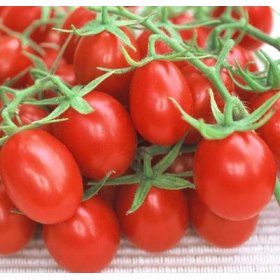Mayra Rivarola is a new student in my lab and pulled together a decent piece on tomatoes and salmonella. And provided some excellent tomato photos. 
Karen Wisser of Eastside & Westside markets in Manhatan, Kansas, knows fresh produce. Wisser says buying produce from her markets is much safer than buying produce from larger retailers because she can identify their supplier easily and go back directly to the source in case of an outbreak of foodborne illness.
"If we don’t like what we’re getting, we can stop buying from them, we know what consumers want,” said Wisser.
Bryant Ambelang, chief marketing officer of Desert Glory, one of North America’s largest grower of greenhouse tomatoes, says that food safety is a top priority which is why the company invests in greenhouse operations, private wells, continual testing procedures and 100% product traceability.
The latest outbreak of salmonella associated with fresh tomatoes, with 277 sick people now identified in 28 states, including Kansas, raises questions about the safety of fresh produce and the food supply in general.
The U.S. Food and Drug Administration is advising consumers to stay away from red plum, red roma and round red tomatoes unless they come from areas that have been given the all-clear by the FDA. The list is available at www.fda.gov/oc/opacom/hottopics/tomatoes.html#retailers. The FDA website also states that homegrown tomatoes are safe to consume.
But, should consumers blindly assume that a tomato, because it was bought from the farmer next door, is free of salmonella or other dangerous bugs?
 To protect the produce, it is essential that safety guidelines are followed, beginning on the farm.
To protect the produce, it is essential that safety guidelines are followed, beginning on the farm.
Fresh fruits and vegetables can be contaminated through different venues including: contact with untreated manure, contaminated water, workers with poor hygiene habits or infected with contagious diseases, unclean containers, tools, storage or transportation facilities.
